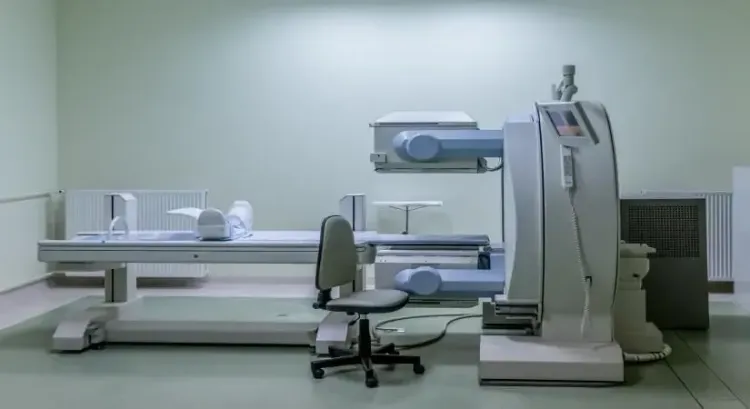India’s Diagnostic Imaging Sector Expected to Exceed $7 Billion by 2033: Report

Synopsis
Key Takeaways
- India's diagnostic imaging market to exceed $7 billion by 2033.
- Projected CAGR of 7 percent driven by healthcare spending.
- Portable imaging devices enhance healthcare access in rural areas.
- Technological advancements improve diagnostic accuracy.
- Regulatory challenges hinder widespread adoption.
New Delhi, March 29 (NationPress) India’s diagnostic imaging market is on track for significant growth, anticipated to surpass $7 billion by 2033, as per a recent report.
The market is expected to achieve a compound annual growth rate (CAGR) of approximately 7 percent, fueled by increasing healthcare spending, a rising burden of chronic diseases, and a heightened demand for accessible diagnostic solutions.
The report from GlobalData, a leading data and analytics firm, disclosed that in 2024, India represented about 20 percent of the Asia-Pacific (APAC) diagnostic imaging devices market.
The adoption of portable imaging solutions is predicted to be a major factor in market growth, particularly in underserved and rural areas where traditional infrastructure is lacking.
“Portable imaging devices are revolutionizing healthcare delivery in India. In emergency and trauma scenarios, these devices facilitate quick on-site diagnostics, minimizing the need for patient transfers and enhancing care provision,” stated Rohit Anand, Practice Head – Medical Devices at GlobalData.
“Additionally, for smaller healthcare facilities, they can provide a cost-efficient option compared to comprehensive imaging systems, improving access without requiring significant capital outlay,” he added.
Recent technological innovations are further enhancing the clinical benefits of portable imaging.
Advancements such as AI-enhanced image analysis, miniaturization, and wireless connectivity are enhancing diagnostic precision and facilitating data sharing.
Moreover, portable MRI and CT systems, upgraded by innovations like photon counting and compact MRI magnets, are achieving better resolution with reduced radiation exposure.
“The infusion of portable imaging into point-of-care environments boosts early disease detection and enables real-time diagnostics, resulting in timely interventions and improved patient outcomes,” concluded Anand.
“This is especially crucial for broadening healthcare access to remote and resource-limited regions,” he remarked.
Nevertheless, the extensive integration of portable imaging in India remains in its early phases. High ownership costs, intricate import regulations, and limited service infrastructure present significant challenges.
Continuous maintenance needs and the requirement for skilled personnel further contribute to the financial burden.
“To unlock the complete potential of portable imaging, it is imperative to tackle regulatory hurdles, simplify import procedures, and bolster support networks. These measures will be vital for ensuring affordability and widespread adoption throughout the country,” stated Anand.









